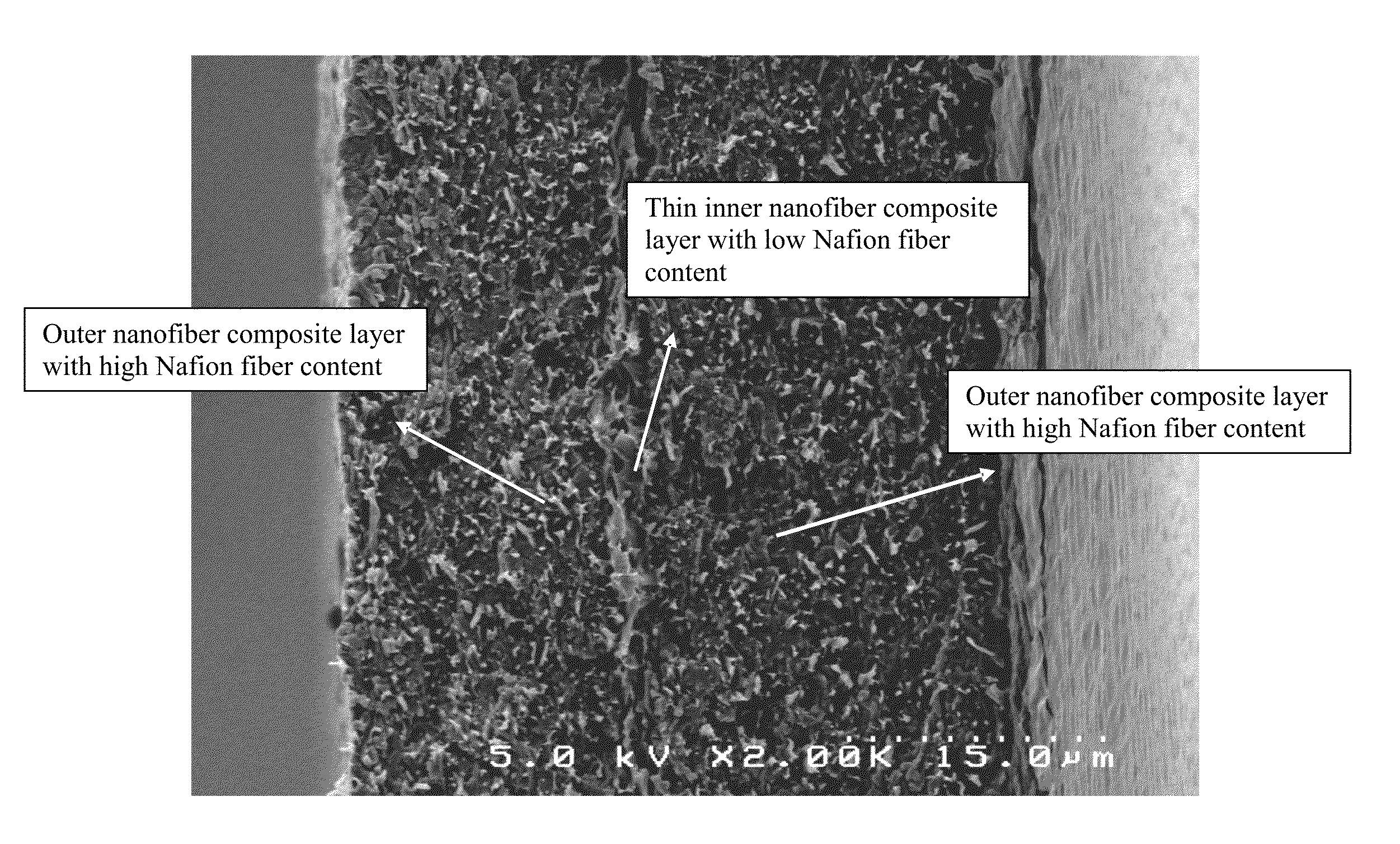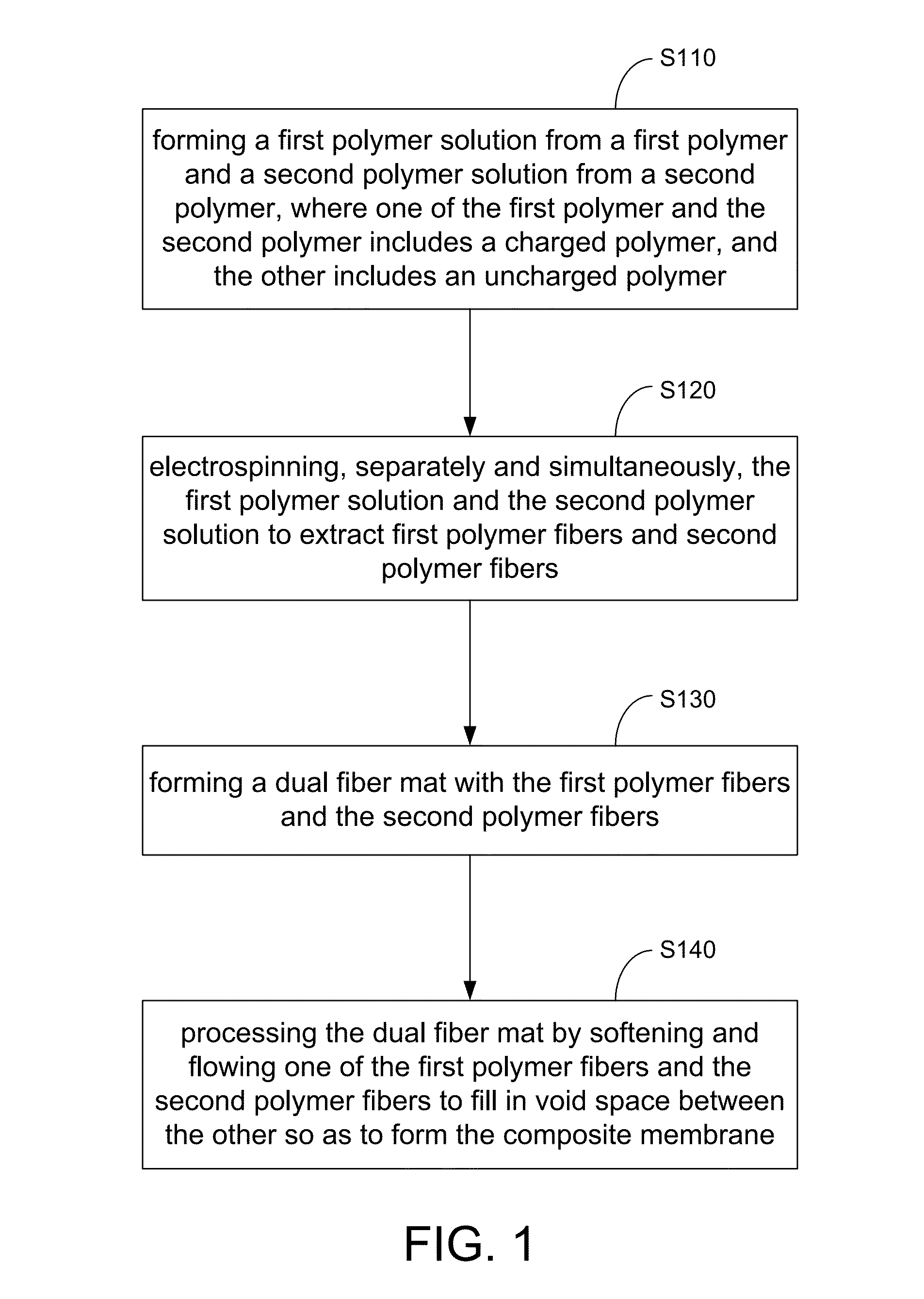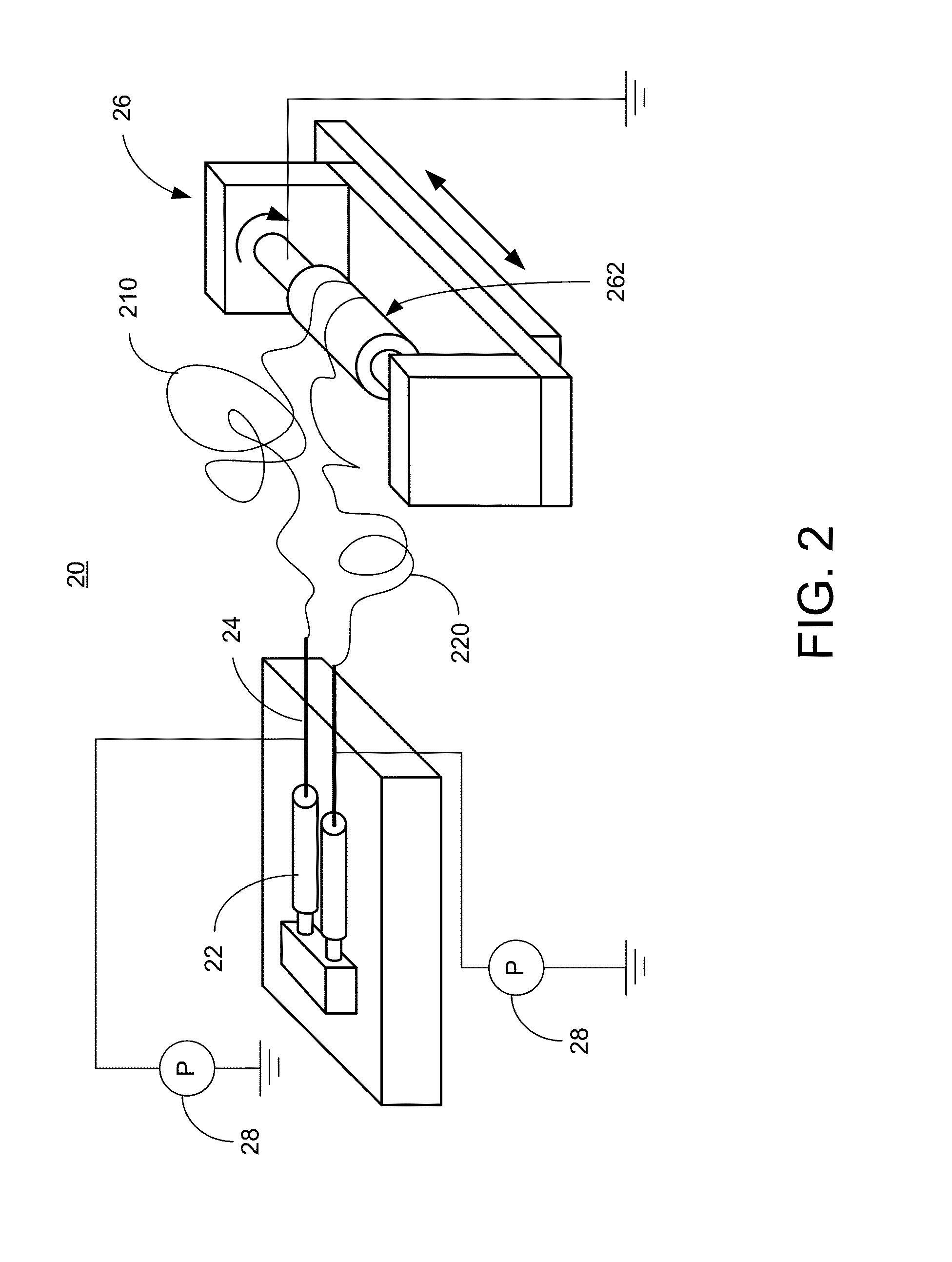Composite membranes, methods of making same, and applications of same
a composite membrane and membrane technology, applied in the field of nanotechnology, can solve the problems of reducing the inherent mobility of hydrogen anions, exacerbate the problem of membrane brittleness, adversely affecting the ionic conduction of an aem, etc., and achieve the effect of increasing the density of polyelectrolyte fibers
- Summary
- Abstract
- Description
- Claims
- Application Information
AI Technical Summary
Benefits of technology
Problems solved by technology
Method used
Image
Examples
example one
[0139]In this example, a composite membrane, comprising about 70 vol % 660 equivalent weight perfluorosulfonic acid and about 30 vol % polyphenylsulfone (PPSU), was fabricated and characterized. The dual fiber electrospinning method as disclosed in the application was utilized for the fabrication of the membrane, where the two polymers were simultaneously electrospun into a dual-fiber mat. Follow-on processing converted the mat into a fully dense and functional fuel cell ion-exchange membrane with polyphenylsulfone nanofibers embedded in an ionomer matrix. The proton conductivity of the composite membrane was high, e.g., about 0.070 S / cm at about 80° C. and about 50% relative humidity. The dimensional stability of the membrane upon water uptake was excellent, with an in-plane (areal) swelling of only about 5% in room temperature water. In this example, PPSU, which is an uncharged polymer, is used as the first polymer, and 3M660 ionomer, which is a charged polymer, is used as the sec...
example two
[0159]In this exemplary embodiment of the invention, nanofiber composite anion exchange membranes were created by electrospinning two polymers: a chloromethylated polysulfone that would ultimately serve as the hydroxide ion conductor and an uncharged polyphenylsulfone to limit water swelling and provide mechanical strength to the final membrane. After electrospinning, the chloromethyl groups were converted into quaternary ammonium moieties for hydroxide ion conduction. The polyphenylsulfone nanofibers were then selectively made to flow and fill the void space in the dual fiber mat, thus forming a dense, defect free membrane. The final membrane morphology was a quaternized polysulfone interconnecting nanofiber network embedded in a polyphenylsulfone matrix. For a membrane containing 63 vol % anion-exchange polymer fibers (with a fiber IEC of 2.5 mmol g−1), the OH− ion conductivity was high (40 mS cm−1 in 23° C. water) and the equilibrium water swelling at room temperature was moderat...
example three
[0183]FIGS. 12-17 show an Example Three of the present invention, where PEMs are fabricated and used for PEM fuel cells. In this example, Nafion, which is a charged polymer, and PPSU, which is an uncharged polymer, are used as the first polymer and the second polymer (to electrospin Nafion PEO was used as a carrier polymer, so the fibers were a Nafion / PEO). When the Nafion / PEO is used as the second polymer, the melting (or softening and flowing) process of the Nafion / PEO includes compressing and thermal annealing processes. When the PPSU is used as the second polymer, the melting (or softening and flowing) process of the PPSU includes compressing, solvent vapor exposure and thermal annealing processes.
[0184]According to the exemplary embodiment, Nafion and polyphenylsulfone are simultaneously electrospun into a dual-fiber mat. Follow-on processing of the mat produces two distinct membrane structures (1) Nafion nanofibers embedded in uncharged (or minimally charged) / uncharged polyphe...
PUM
| Property | Measurement | Unit |
|---|---|---|
| RH | aaaaa | aaaaa |
| thick | aaaaa | aaaaa |
| thick | aaaaa | aaaaa |
Abstract
Description
Claims
Application Information
 Login to View More
Login to View More - R&D
- Intellectual Property
- Life Sciences
- Materials
- Tech Scout
- Unparalleled Data Quality
- Higher Quality Content
- 60% Fewer Hallucinations
Browse by: Latest US Patents, China's latest patents, Technical Efficacy Thesaurus, Application Domain, Technology Topic, Popular Technical Reports.
© 2025 PatSnap. All rights reserved.Legal|Privacy policy|Modern Slavery Act Transparency Statement|Sitemap|About US| Contact US: help@patsnap.com



